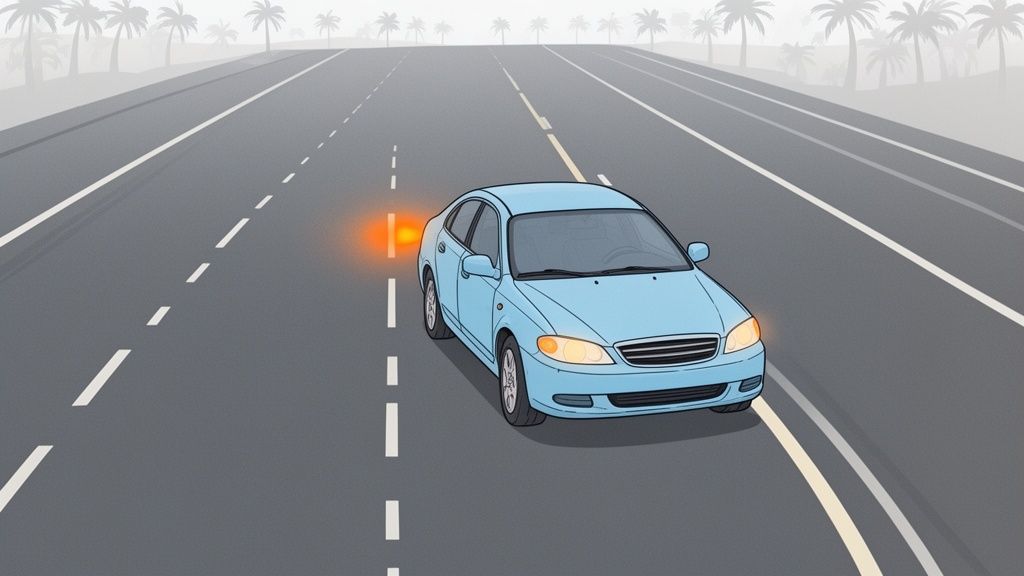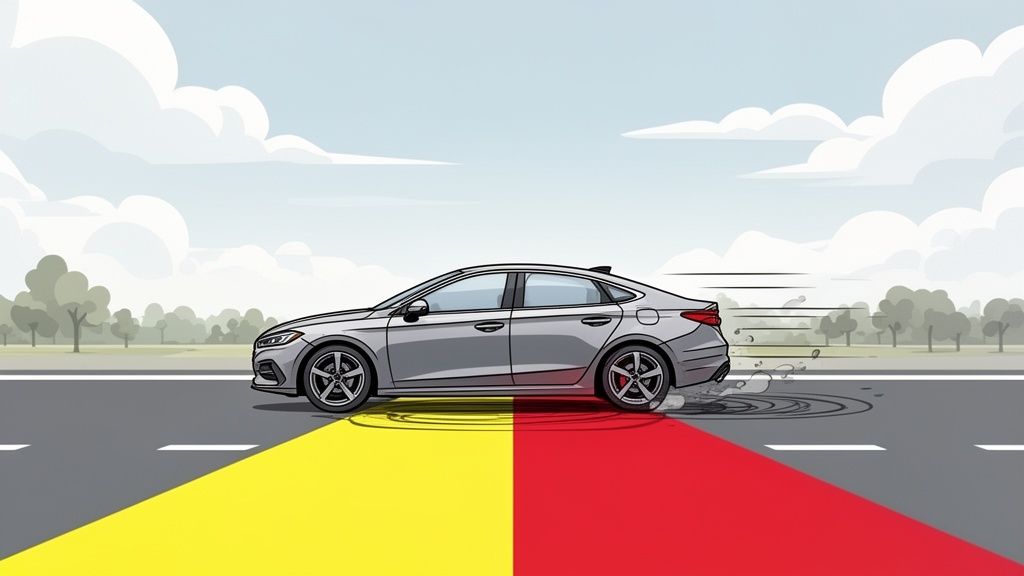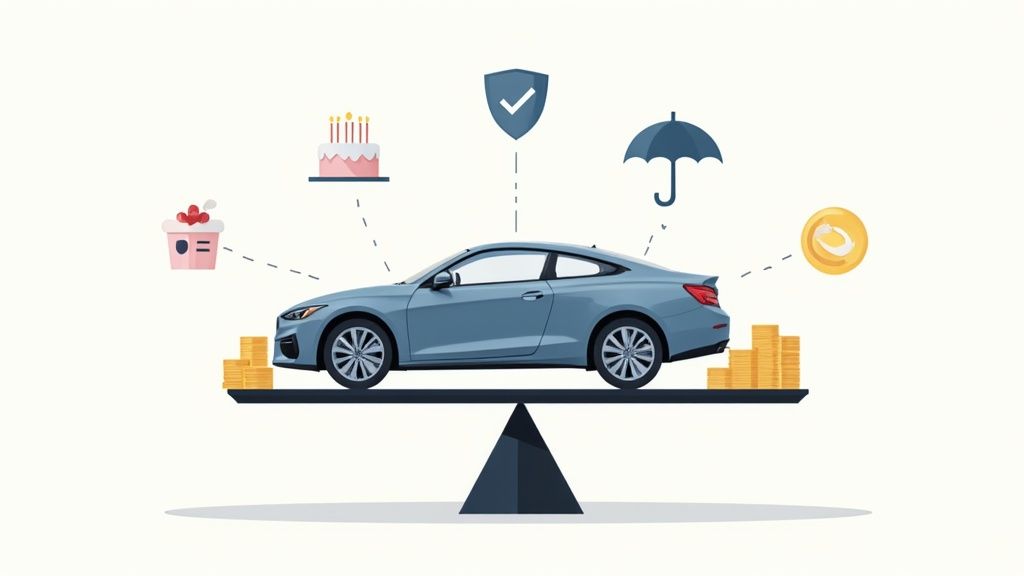At DriverEducators.com, we believe that everyone deserves the opportunity to learn how to drive safely and confidently.
Driving lessons for special needs students require a tailored approach that addresses individual challenges and abilities.
Our specialized instruction techniques and adaptive technologies ensure that learners with various disabilities can acquire the necessary skills to become independent drivers.
Understanding Special Needs in Driving Education
Types of Special Needs Affecting Driving
At DriverEducators.com, we recognize that special needs in driving education encompass a wide range of conditions that can affect an individual’s ability to operate a vehicle safely. These conditions include physical disabilities, cognitive impairments, and sensory processing disorders.
Physical Disabilities and Driving
Physical disabilities that impact driving include conditions like spinal cord injuries, limb amputations, or muscular dystrophy. A person with limited mobility in their legs might require hand controls to operate the accelerator and brake. A study found that 74 percent of disabled drivers age 75 or older avoid driving at night, compared to 54 percent of nondisabled drivers in the same age group.
Cognitive Impairments and Driving Challenges
Cognitive impairments such as ADHD, autism spectrum disorders, or traumatic brain injuries can affect a person’s ability to process information, make quick decisions, and maintain focus while driving. These conditions require specialized teaching methods and often extended practice time. A study published in the Journal of Autism and Developmental Disorders found that only about 33% of young adults with autism spectrum disorders held a driver’s license (compared to 84% of their neurotypical peers).
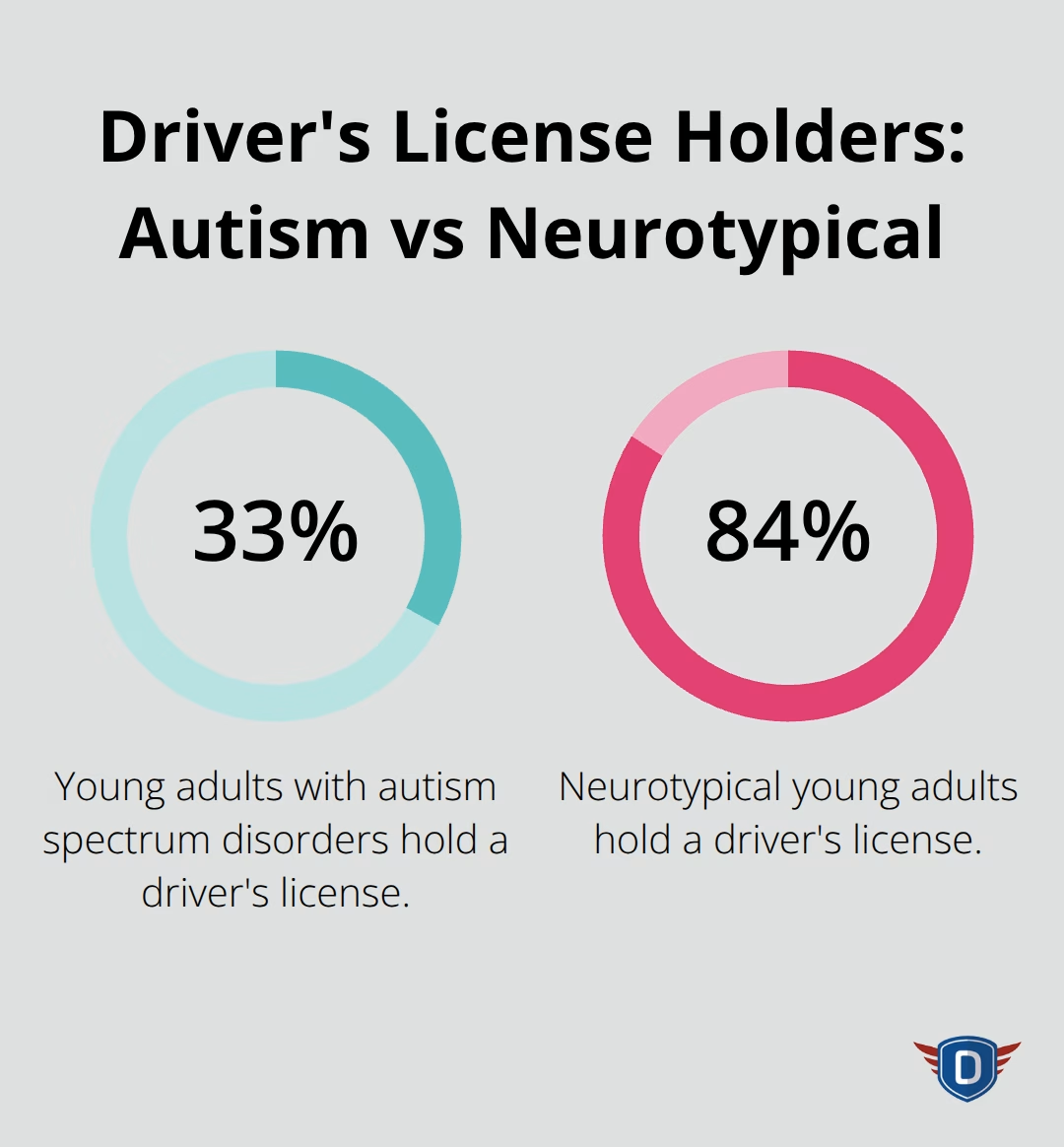
Sensory Processing and Driving
Sensory processing disorders significantly impact driving ability. Individuals with visual impairments might need specialized equipment like bioptic lenses to drive safely. The American Foundation for the Blind reports that approximately 20.6 million adult Americans have experienced vision loss, highlighting the importance of accommodating these needs in driver education.
Importance of Individualized Approaches
Each student with special needs requires a unique approach. Instructors must assess each student’s abilities and challenges to create a personalized learning plan. This might involve breaking down complex tasks into smaller, manageable steps or using visual aids to reinforce concepts.
Legal Requirements and Accommodations
Laws regarding driving with disabilities vary by state. Some states require medical clearance for certain conditions before issuing a driver’s license. The Americans with Disabilities Act (ADA) mandates that driver education programs provide reasonable accommodations for students with disabilities. This could include extended test-taking time or the use of adaptive equipment during instruction.
As we move forward to discuss adaptive technologies and equipment, it’s important to note how these advancements have revolutionized driving education for individuals with special needs. These innovations have opened up new possibilities for independence and mobility, allowing more people to experience the freedom of driving.
How Adaptive Technologies Enhance Driving for Special Needs
Modified Vehicle Controls
Modified vehicle controls have transformed driving for individuals with physical disabilities. Hand controls for acceleration and braking allow drivers with limited leg mobility to operate vehicles safely. Steering wheel balls (also known as spinner knobs) enable drivers with limited hand dexterity or strength to maintain control, although they may pose safety risks during frontal impacts.
Some advanced systems incorporate voice-activated controls for functions like turn signals and windshield wipers, further enhancing accessibility.
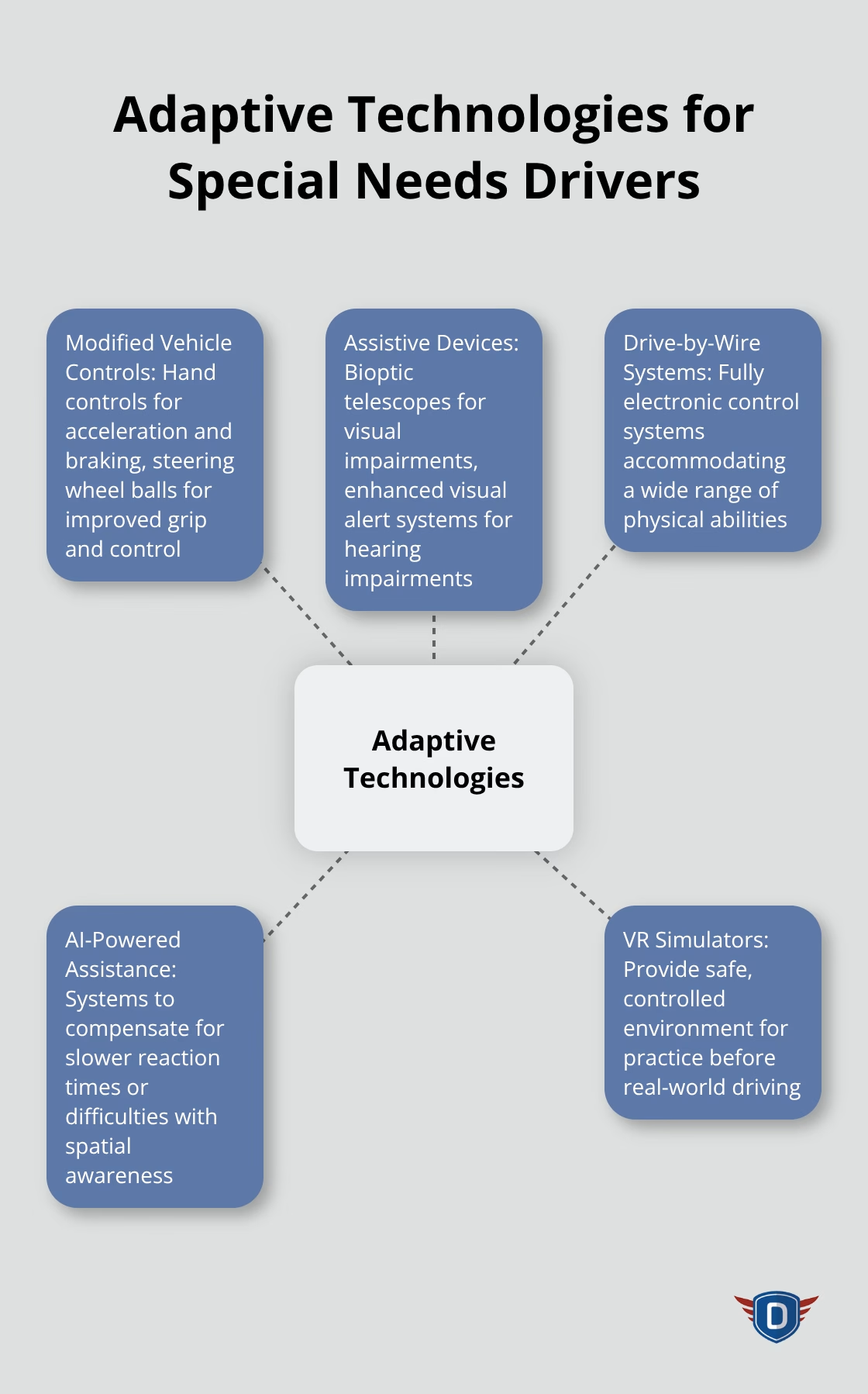
Assistive Devices for Various Disabilities
Bioptic telescopes have revolutionized driving for those with visual impairments. These specialized glasses allow drivers with certain types of vision loss to see distant details more clearly. Studies on bioptic drivers have shown mixed results, with some reporting lower collision rates, others finding similar rates, and some indicating higher collision rates compared to the general driving population.
Hearing-impaired drivers benefit from enhanced visual alert systems. These systems use bright LED lights to indicate various vehicle functions and potential hazards, replacing traditional auditory cues.
Technological Advancements in Adaptive Driving
Recent years have witnessed significant advancements in adaptive driving technology. Drive-by-wire systems (fully electronic control systems) can accommodate a wide range of physical abilities, allowing drivers to control vehicles with minimal physical effort.
Artificial intelligence and machine learning have entered the adaptive driving sphere. AI-powered driver assistance systems help compensate for slower reaction times or difficulties with spatial awareness (common challenges for some drivers with cognitive impairments).
Virtual reality (VR) simulators have become sophisticated tools for training drivers with special needs. These simulators provide a safe, controlled environment for practice before transitioning to real-world driving. A 2022 study in the Transportation Research journal revealed that VR training improved driving performance and confidence in novice drivers with autism spectrum disorders.
As we explore these technological advancements, it becomes clear that adaptive technologies play a crucial role in enabling individuals with special needs to drive safely and independently. However, technology alone is not enough. The next section will discuss the specialized instruction techniques that complement these adaptive technologies, ensuring that drivers with special needs receive comprehensive and effective training.
Effective Teaching Strategies for Special Needs Drivers
Tailored Communication Approaches
Communication forms the foundation of teaching special needs drivers. For students with hearing impairments, visual aids and written instructions prove invaluable. Instructors trained in basic sign language facilitate better communication. For those with cognitive disabilities, complex concepts are broken down into simple, easy-to-understand steps.
The National Highway Traffic Safety Administration aims to “save lives, prevent injuries, and reduce economic costs due to road traffic crashes.” This mission extends to drivers with cognitive impairments, who benefit from repeated instructions and hands-on demonstrations. This approach combines verbal explanations, visual demonstrations, and guided practice sessions.
Flexible Teaching Methods
Instructors adapt their teaching style to suit each student’s learning pace and preferences. Students with ADHD often benefit from shorter, more frequent lessons to maintain focus. Gamification techniques make learning more engaging for these students.
For individuals with autism spectrum disorders, visual schedules and clear, concrete language prove effective. A recent Journal of Autism and Developmental Disorders study suggests that autistic drivers are not generally at greater risk of negative driving outcomes. Instead, they face unique challenges based on their skills, which can be addressed through tailored teaching methods.
Creating a Supportive Environment
A supportive learning environment proves essential for special needs drivers. The process starts with a thorough assessment of each student’s abilities and challenges. This assessment allows for the setting of realistic goals and the creation of a personalized learning plan.
Family members or caregivers often play a role in the learning process. Their support and feedback can be invaluable, especially for students with cognitive impairments. An American Occupational Therapy Association survey found that 78% of special needs drivers felt more confident when their family participated in their driving education.
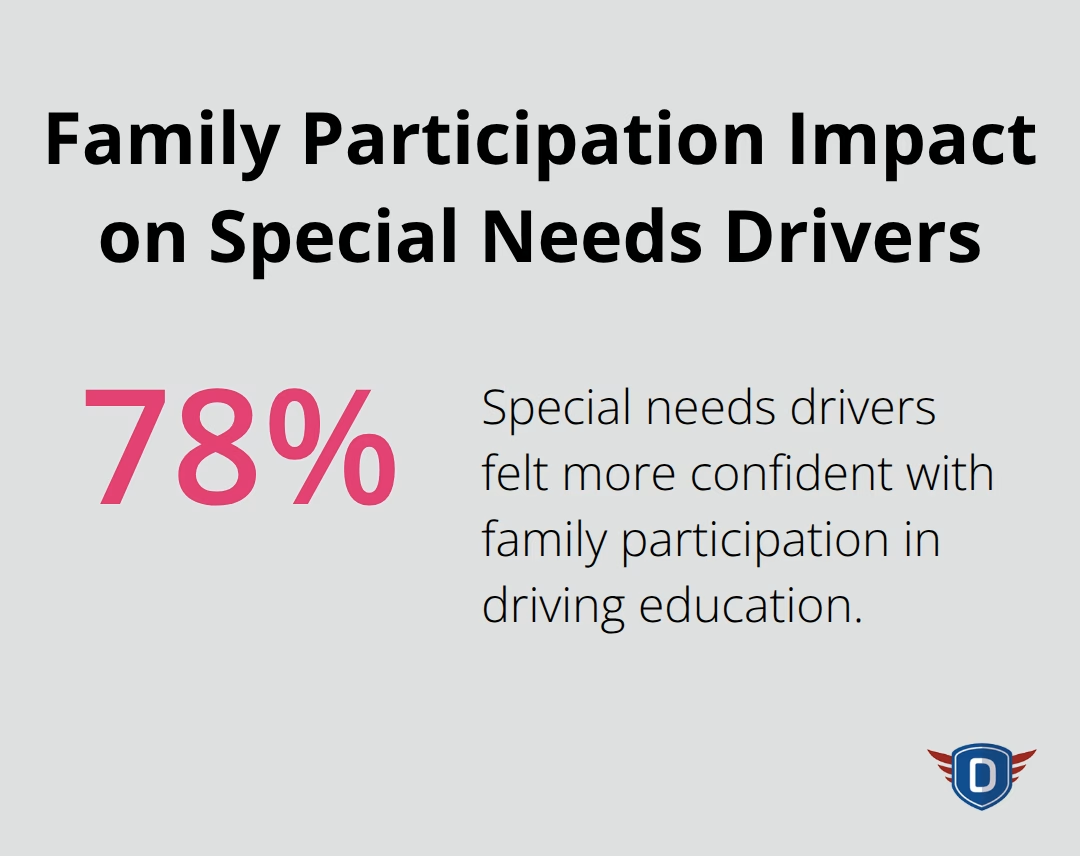
Positive Reinforcement Techniques
Instructors use positive reinforcement and constructive feedback to build confidence and reduce anxiety. This approach proves particularly important for students with anxiety disorders or low self-esteem. Small victories are celebrated, and mistakes become learning opportunities.
Adaptive Equipment Integration
Teaching special needs drivers often involves the integration of adaptive equipment. Instructors must familiarize themselves with various modifications (such as hand controls or steering aids) and teach students how to use them effectively. This integration of technology and teaching methods ensures that students can safely operate their vehicles with their specific adaptations.
Final Thoughts
Driving lessons for special needs individuals empower people and foster independence. At DriverEducators.com, we tailor our approach to meet individual needs, understanding that each student faces unique challenges. Our experienced instructors work with a diverse range of students, utilizing the latest adaptive technologies and specialized teaching techniques.
We encourage all individuals with special needs who aspire to drive to pursue their goals. With the right support, many can become safe and confident drivers. The journey may present challenges, but the rewards of increased autonomy and improved quality of life are significant.
DriverEducators.com commits to inclusive driver education for all. We support students from their first lesson to license acquisition (and beyond). Our driving lessons for special needs students reflect our belief in equal opportunities and our dedication to road safety for everyone.
